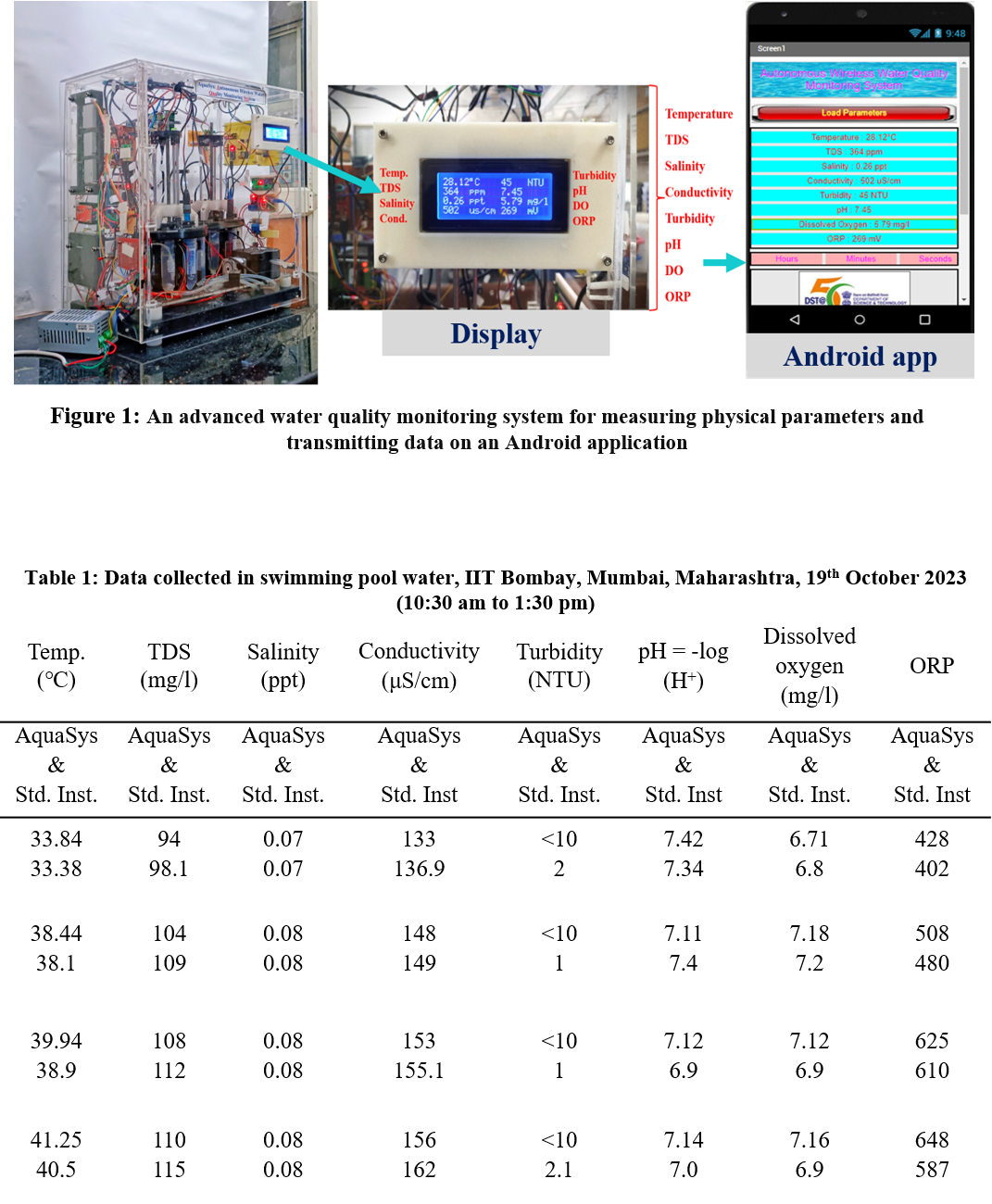Breadcrumb
- Home
- Publications
- Proceedings
- 2024 AIChE Annual Meeting
- Topical Conference: Sensors for Sustainability
- Sensors and Monitoring for Health
- (295k) Smart, Automatic Real-Time Water Quality Monitoring System

We have developed a completely in-house manufactured water quality monitoring system, which can operate without human intervention by measuring eight key physical parameters and transmitting the data to a web interface and an Android application. The system consists of a filter and sampling ports to draw water from the waterbody with the help of a 3D-printed peristaltic pump. It also includes two 3D-printed autosamplers, electrochemical and optical sensors, microcontrollers, LoRaWAN (a low-range wireless data transmission module), and an ESP8266 receiver module.
The initiation of the system is automated through the integration of a relay and real-time clock module, facilitated by an Arduino microcontroller. After this, the MSP430 microcontroller regulates the operation of the drivers for the peristaltic pump and two autosamplers. These components work together to draw water from the water body through sampling ports, after filtering out large impurities using a filter. The mobile part of the autosampler moves angularly and vertically with precision for washing, calibration and testing of sensor probes. The sensors then measure water quality parameters by immersing them in collected water within sampling containers. The MSP430 microcontroller collects measured data, which is linked to a LoRaWAN module to transmit data to the receiver ESP8266. Subsequently, the receiver sends the collected data to the web interface and an Android application utilizing the Wi-Fi network.
The eight physical parameters are measured in the following ranges, including temperature (18-45℃), pH (1.3-12), total dissolved solids [5-5000 ppm (parts per million)], salinity [0-3.5 ppt (parts per thousand)], conductivity (8-7500 μS/cm), turbidity [10 to 8000 NTU (nephelometric turbidity unit)], dissolved oxygen (0.4-8 mg/l) and oxidation-reduction potential (-150 to +700 mV) by the system. This measurement is to deliver a more accurate assessment of water quality in different aquatic environments. Some sensors require less time for measurement, while others take more, due to chemical reactions occurring during sensing: turbidity sensors 2 sec, temperature sensors 10 sec, TDS, salinity, and conductivity sensors require 30 sec, pH sensors require 300 sec and dissolved oxygen and ORP sensors require 400 sec.
The system has exhibited excellent performance during testing, measuring eight parameters with good accuracy (mostly less than ±2, and rest less than ±5 percentage error) with ultrapure water, tap water, pond water and lake water in the laboratory, as well as in the field testing with swimming pool water and that in a water canal. In very few cases, turbidity shows a higher percentage error due to measurement at a very low level of turbidity. ORP also sometimes shows a higher percentage error, due to incomplete oxidation and reduction reactions, in order to reduce the overall process time of water quality monitoring to about 26 min in a single cycle. Such measurement and monitoring cycles can be repeated multiple times in a day and over many days, completely autonomously, for a possible time series analysis of water quality parameters.
In addition, the system has many advantages, reduced contact between probes and contaminated water by drawing water from the testing container via the peristaltic pump, avoiding water storage, probe washing before testing new water sample, autosampler operation, customized PCBs and wireless data transmission to an Android app. These features also introduce novelty to the overall process. The system has a compact size of 19.5 cm x 12.5 cm x 21.5 cm, weight (17.5 Kg) and an approximate manufacturing price of $836.
The system can be deployed at different locations at various waterbodies. This can help to identify zones such as low-polluted, moderately polluted, and highly polluted. The system can be deployed in fishing areas and swimming pools to prevent situations like low dissolved oxygen and high turbidity.
Another system has been developed for monitoring both metal and non-metal ions, such as arsenic, chromium, fluoride, and iron by a colorimetric technique using respective reagents. Both systems have similar features like automatic operation, LoRa wireless data transmission, and Android application access, offering significant advantages in ensuring water safety and environmental health.